ENV100 Chapter 11: Freshwater Systems + Water Resources
1/94
Earn XP
Description and Tags
Name | Mastery | Learn | Test | Matching | Spaced |
|---|
No study sessions yet.
95 Terms
Fresh water
Water that has low salinity (generally, less than about 500 ppm dissolved salts)
only 2.5% of water in the world
Residence times
Storage times in reservoirs in the hydrologic cycle
WHat is the largest reservoir in the hydrosphere?
The ocean
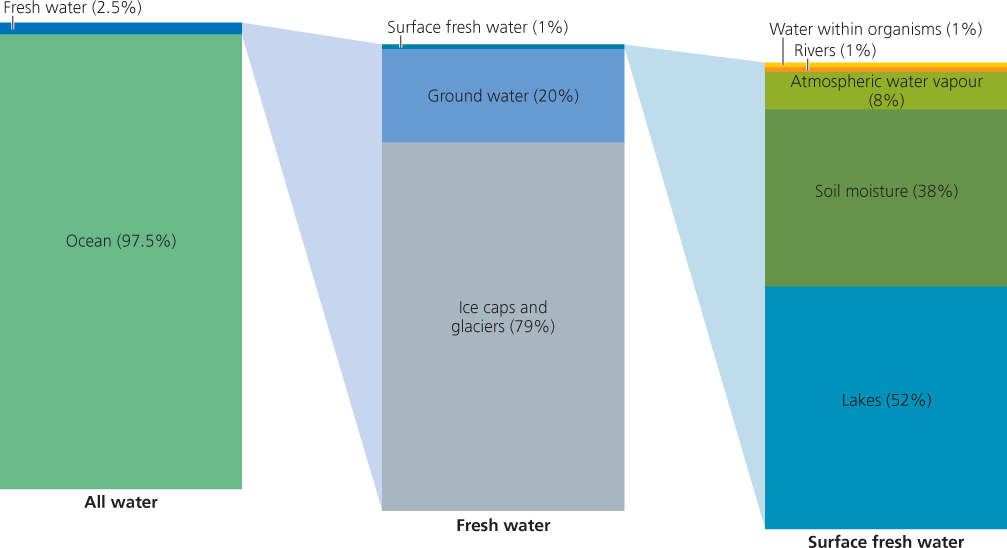
Tributary
A smaller river that flows into a larger one
Drainage basin
Area of land drained by one river and its tributaries; sometimes called a catchment
Watershed
The boundaries that delineate a drainage basin; the drainage basin and all of its component parts, including the physical (abiotic) resources, ecological communities, and human occupants and uses of the area
Floodplain
The region of land over which a river has historically wandered, and which is periodically inundated
Riparian
Relating to a river or the area along a river
Upstream area
Near the source of the stream
Downstream area
Farther along the river’s course
Wetland
A system that combines elements of fresh water and dry land; usually there is standing water for at least part of the year
biologically productive systems include freshwater marshes, swamps, peatlands, fens, bogs, and shallow-water wetlands such as vernal pools
Environments in which wetlands occur
palustrine (inland)
fluvial, riparian, or riverine (related to a river)
lacustrine (related to a lake)
estuarine (related to an estuary)
coastal or marine (related to an oceanic coastal zone)
Canadian Wetlands Classifcation System
System where wetlands are grouped into five classes based on their broad characteristics and the environment in which they occur
Five classes are:
Marsh
Swamp
Bog
Fen
Shallow open water
Form
Specific characteristics of the specific vegetation communities that they host
wetland classification
Type
Each form/combination can be described according to the specific vegetation communities that they host
wetland classification
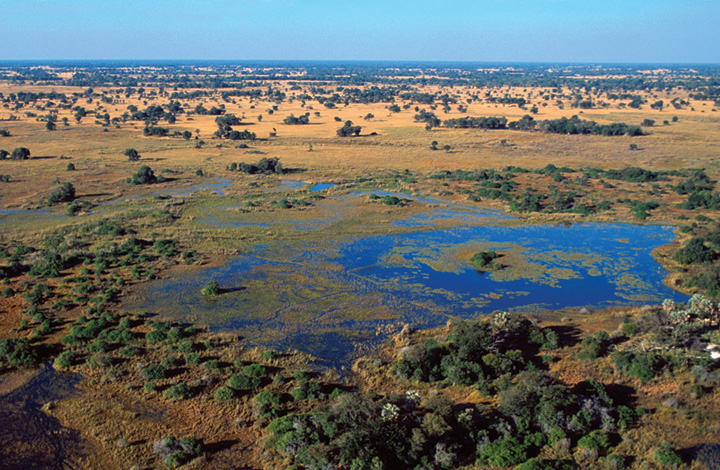
Marsh
A type of wetland in which shallow water allows grasses and seasonal herbaceous plants to grow above the water’s surface
Swamp
A type of wetland consisting of shallow water rich with vegetation, occurring in a forested area
Bog
A type of wetland in which a pond is thoroughly covered with a thick, floating mat of vegetation
peatlands
mineral-poor and slightly acidic
Shallow-water wetlands
A wetland with some open, flowing, or standing water
includes ponds, sloughs, oxbows, and vernal pools
Fen
A type of wetland covered with a thick mat of vegetation, and fed by ground water
mineral-rich from their association with ground water (typically contains lots of dissolved minerals)
Freshwater marshes
Riverine marshes, lacustrine marshes, wet meadows
Marshes that contain brackish water
Tidal and estuarine marshes
Salt water marsh
Salt marsh
Ephemeral
Short-lived or seasonal
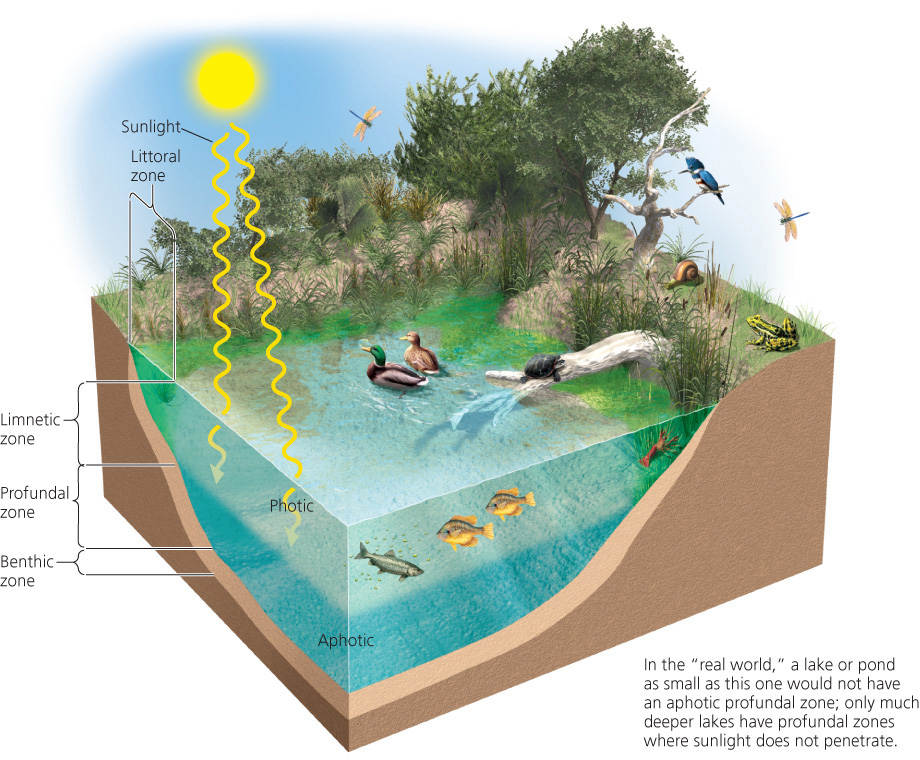
Limnetic zone/photic zone
In a water body, the layer of open water through which sunlight penetrates
open, sunlit water where photosynthesis takes place
supports phytoplanton + zooplankton (both are eaten by fish)
sunlight intensity/water temperature decreases with depth
clear water allows sunlight to penetrate deeply, turbid water does not

Profundal zone/aphotic zone
In a water body, the volume of open water that sunlight does not reach
only present in the deepest lakes
lacks plant life, is lower in dissolved oxygen and supports fewer animals
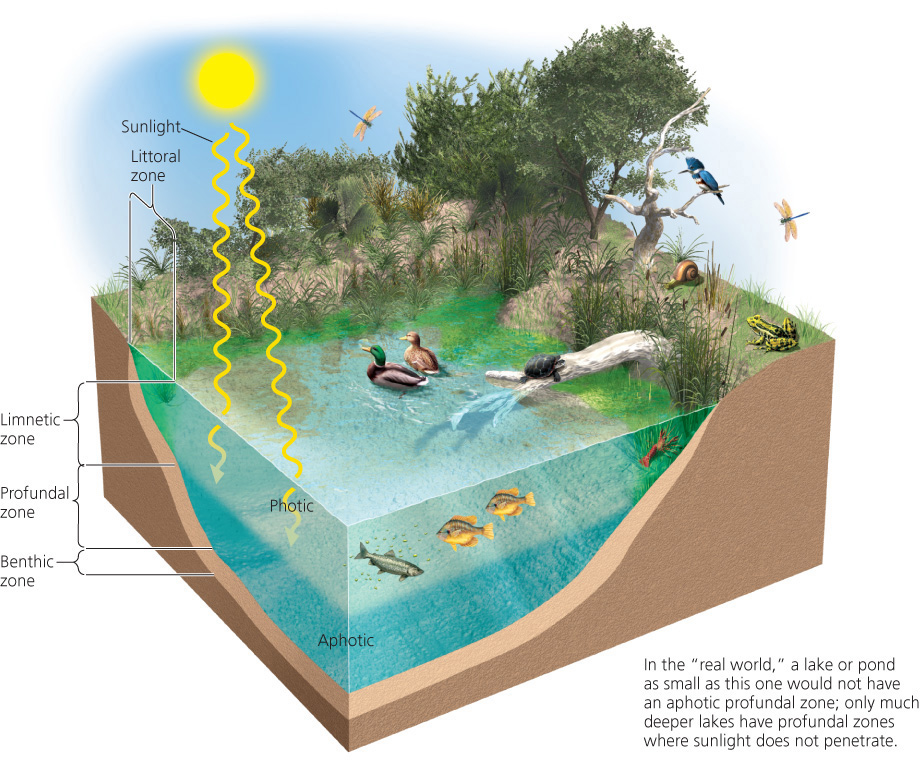
Benthic zone
The bottom of a water body, including the lowermost layer of water and the bottom sediments
muddy, rich in detritus and nutrients, and low in oxygen
many invertebrates live in the mud on the bottom, feeding on detritus/preying on one another

Littoral zone
The region ringing the edge of a water body
emergent plants grow in shallow water around the shoreline
rich in invertebrates (insect larvae, snails, and crayfish)
fish, birds, turtles and amphibians feed
Oligotrophic
Term describing a water body that has low-nutrient and (typically) high-oxygen conditions
Eutrophic
Term describing a water body that has high-nutrient and (typically) low-oxygen conditions

Groundwater
Water held in aquifers underground
Aquifer
An underground reservoir of water, typically a permeable rock or sediment unit
Water table
The upper limit of ground water held in an aquifer
Zone of aeration
An aquifer’s upper layer that consists of rock or sediment in which the pore spaces are only partly filled with water
Zone of saturation
An aquifer’s lower layer where the spaces are completely filled with water
Confined aquifer/artesian aquifer
A water-bearing, porous, and permeable layer of rock, sand, or gravel that is trapped between an upper and lower layer of less permeable substrate, such as clay or unfractured rock
the water is under pressure because it is trapped between two impermeable layers
Unconfined aquifer
A water-bearing, porous, and permeable layer of rock, sand, or gravel that lies atop a less-permeable substrate
the water is not under pressure because there is no impermeable upper layer to confine it
Recharge zone
An area where precipitation falls and infiltrates the ground, percolating downward to eventually join and replenish ground water in an aquifer
Discharge zone
An area where ground water emerges from the subsurface and flows out on the surface to become or join a surface water body
Diversion of water
Removing water from a river system or changing its flow for use in another location
Consumptive use
When we remove water from an aquifer or surfacewater body and do not return it
Nonconsumptive use
Use of water that does not remove, or only temporarily removes, water from the aquifer or surfacewater body
Channelization
Modification of a river’s channel or banks by straightening, widening, or concrete-lining, usually for the purposes of navigation, flood control, or diversion for irrigation or water supply
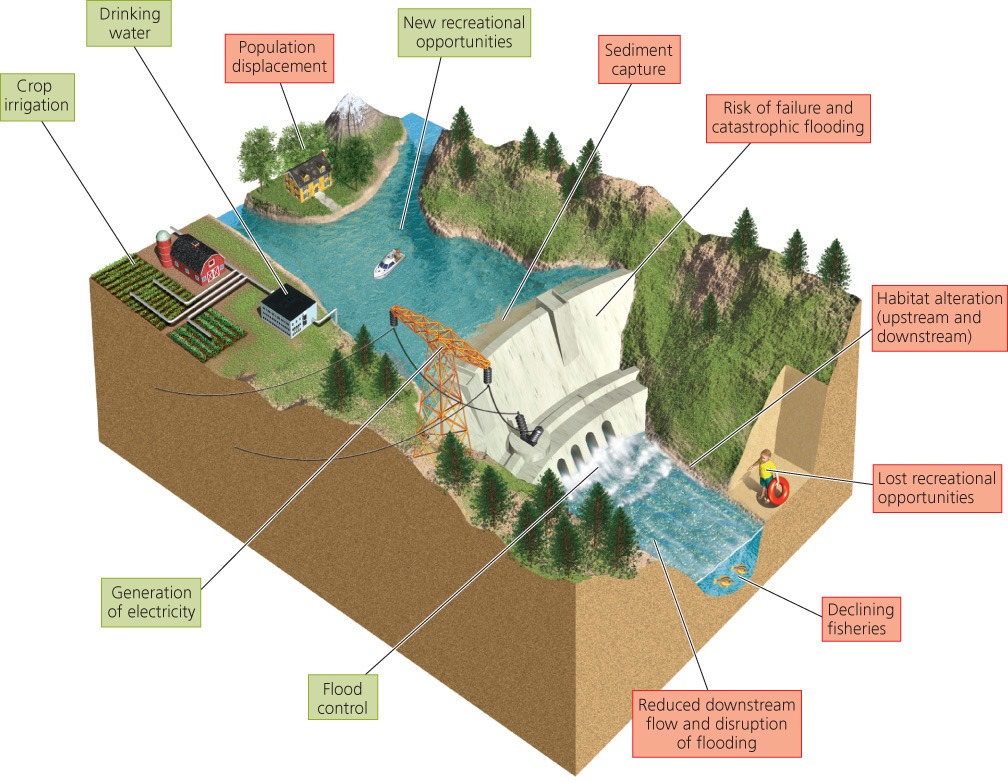
Dam
Any obstruction placed in a river or stream to block the flow of water so that water can be stored in a reservoir
built to prevent floods, provide drinking water, facilitate irrigation, and generate electricity
Sinkhole
An area where the ground has given way with little warning as a result of subsidence
especially in areas underlain by soluble carbonate (limestone) bedrock, and often associated with depression of the water table or depletion of an underlying aquifer
Transboundary waterways
Waterways that cross or flow along national borders + disagreements are common

Desalinization
The removal of salt from sea water or from soil
Reverse osmosis
A method involves forcing water through membranes to filter out salts
Product lifestyle analysis
Concept in which all of the environmental inputs into a product, from beginning to end, are taken into consideration
Pollution
Any matter or energy released into the environment that causes undesirable impacts on the health and well-being of humans or other organisms
can be physical, chemical, biological, or thermal, and can affect water, air, or soil

Point source
A specific spot—such as a factory’s smokestacks—where large quantities of pollutants are discharged
Nonpoint source
A diffuse source of pollutants, often consisting of many small sources
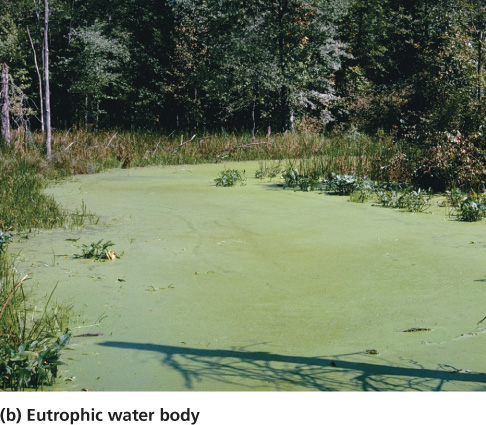
Eutrophication
The process of nutrient enrichment, increased production of organic matter, and subsequent ecosystem degradation
abundant algae + high nutrient content
pollution of freshwater bodies by excess nutrients accelerates this process
Hypoxia
A state of oxygen deficiency
clear and low nutrient content may eventually become a eutrophic water body
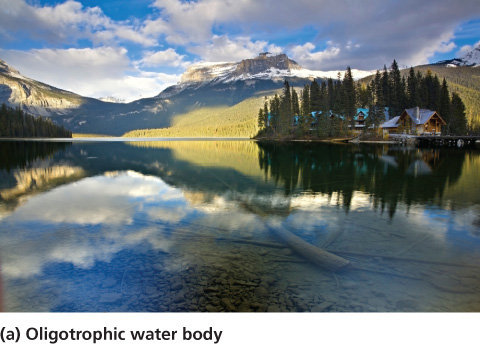
Oligotrophic
Term describing a water body that has low-nutrient and (typically) high-oxygen conditions
Water quality
The suitability of water for various purposes (such as drinking or swimming), as determined by comparing the water’s physical, chemical, and biological characteristics with a set of predetermined standards
End-of-pipe
A response to pollution that deals only with effluents as they emerge from the “end of the pipe,” rather than reducing or eliminating the pollution at its source
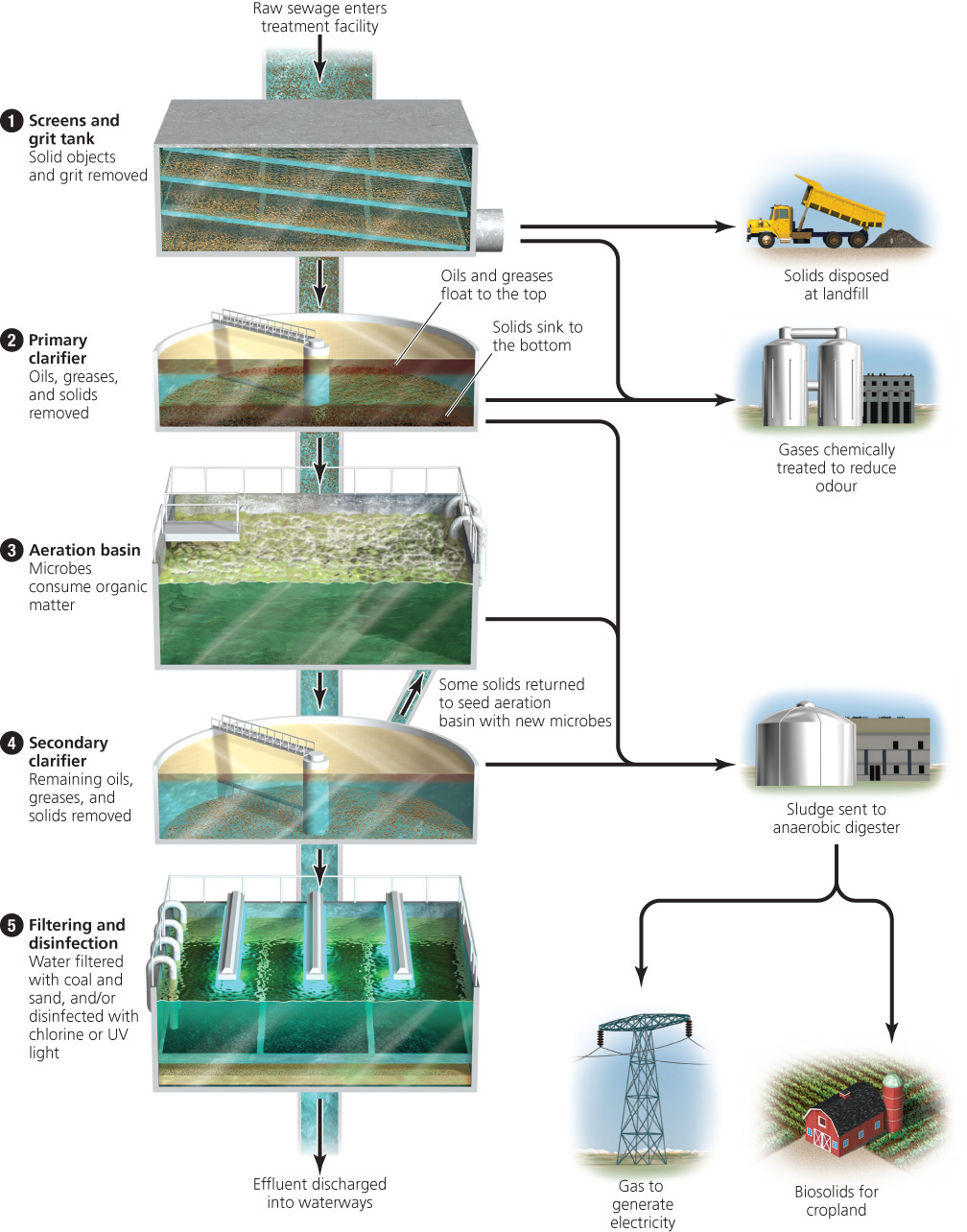
Waste water
Water that is used in households, businesses, industries, or public facilities and is then drained or flushed down pipes, as well as polluted runoff from streets and storm drains; effluent
Septic system
A wastewater disposal method, common in rural areas, consisting of an underground tank and series of drainpipes
waste water runs from the house to the tank, where solids precipitate out
water proceeds downhill to a drain field of perforated pipes laid horizontally in gravel-filled trenches, where microbes decompose the remaining waste
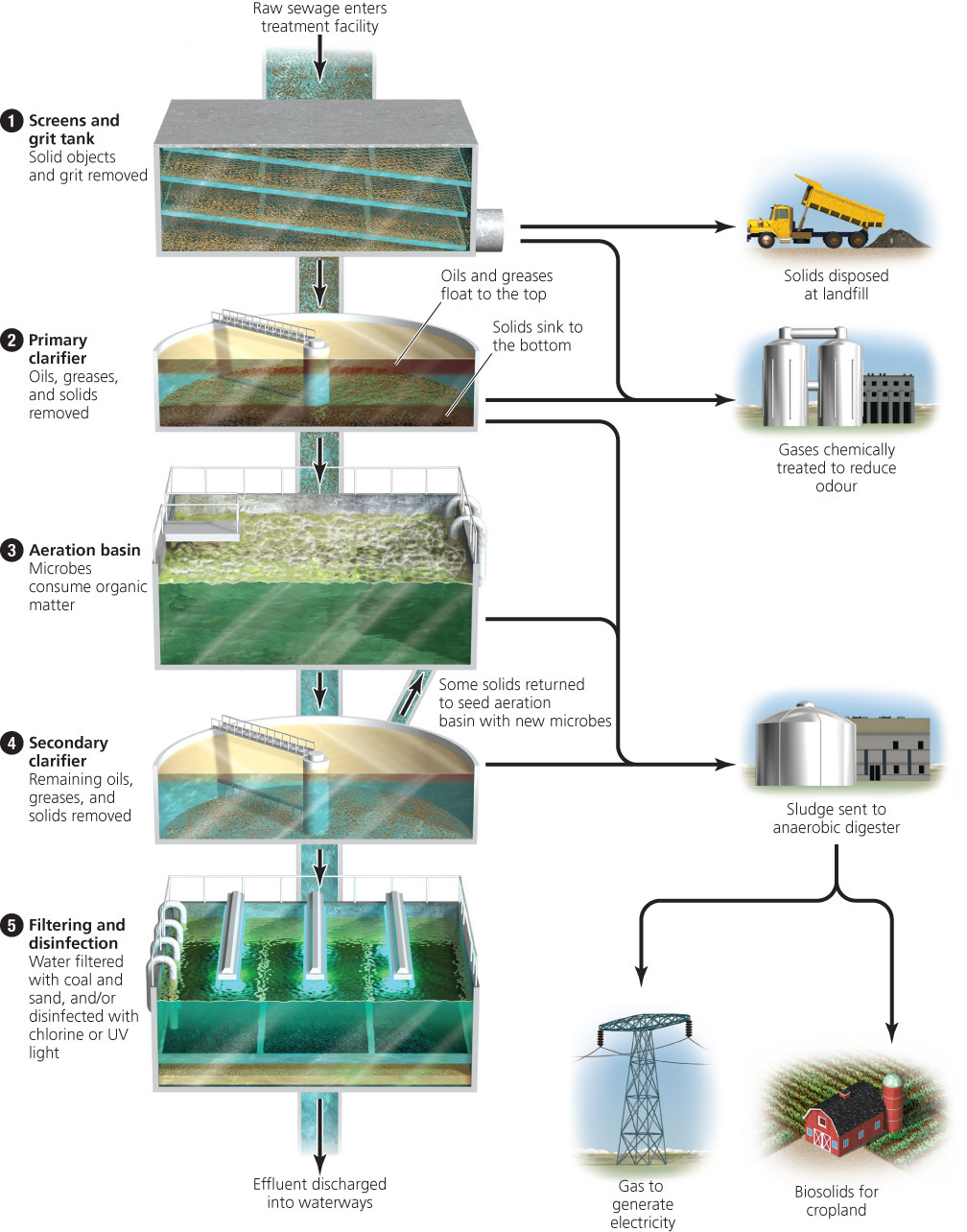
Primary treatment
At a treatment facility, the physical removal of contaminants in settling tanks or clarifiers, generally removes about 60% of suspended solids from waste water
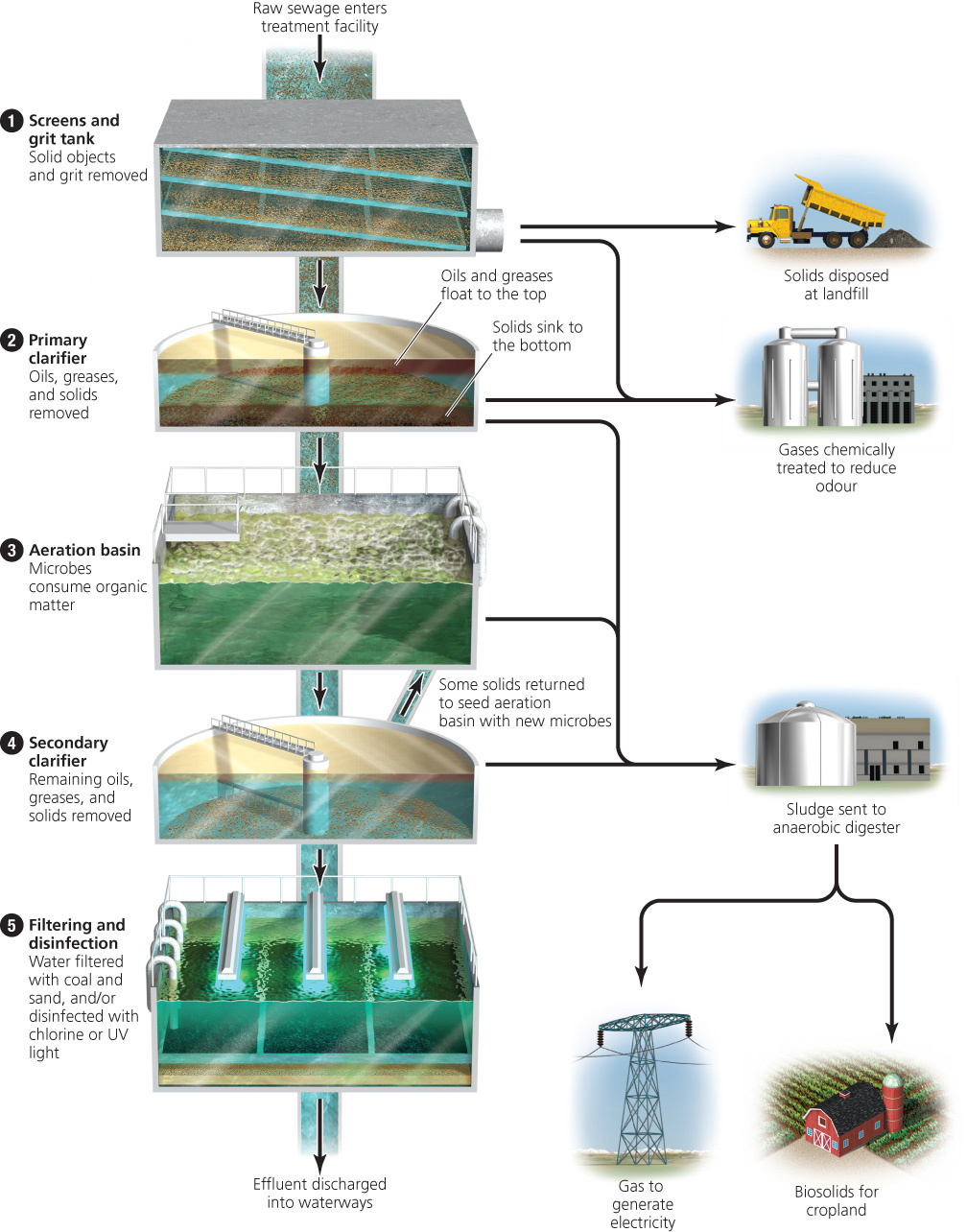
Secondary treatment
At a treatment facility. when water is stirred and aerated so that aerobic bacteria degrade organic pollutants
Effluent
Water that flows out of a facility such as a wastewater treatment plant, mine, or power plant
Grey water
Water that has been through some treatment, or was only lightly soiled to begin with
Remediation
Removing pollutants from contaminated ground water; cleaning or restoring a degraded habitat, environment, or ecosystem
Pump-and-treat
An approach to groundwater remediation that involves pumping out contaminated ground water, cleaning it in a surface facility, and then (typically) pumping it back into the aquifer
Constructed wetlands (artificial or engineered)
A wetland that is built, usually for the purpose of stormwater runoff management or wastewater management
What percentage of Earth's water is readily available for human use, and how is its availability characterized?
Only about 1% of all water on Earth is readily available for human use
Water availability varies spatially and temporally and is often mismatched with population distribution
What are the major human uses of fresh water?
Agriculture (70% of the fresh water globally)
Industry
Residential purposes
Why is a functioning hydrologic cycle vital?
crucial not only for human needs
also for maintaining ecosystem integrity
performs many essential environmental services
How might climate change impact the hydrologic cycle?
Climate change is expected to alter the hydrologic cycle
Potentially leading to water shortages in some regions
Impacting water distribution and availability
What are the characteristics and roles of rivers and streams in freshwater ecosystems?
Rivers and streams carry water and sediment towards the ocean
They play a key role in modifying landscapes through erosion and deposition
What are the five main classes of wetlands, and what roles do they play?
Marshes, swamps, bogs, fens, and shallow-water wetlands
Occur in various physical environments and provide crucial ecosystem services and diverse habitats
What are the different zones of lake water?
the littoral (near shore)
limnetic (open water)
benthic (lake bottom)
in large, deep lakes: the profundal zone
What is ground water and how does it function in the freshwater ecosystem?
Ground water resides in the pore spaces and cracks of subsurface aquifers
It's replenished in recharge zones by precipitation and infiltration and flows out at discharge zones, joining surface water bodies.
What are the environmental impacts of diverting or withdrawing water from freshwater systems?
Diverting or withdrawing water from river channels, surface water bodies, or aquifers can lead to unintended environmental impacts, often worse in downstream areas
What is the impact of damming on rivers?
Most of the world's large rivers are dammed, bringing diverse benefits and costs that are environmental, social, and economic
Other interventions include dikes, floodways, and levees for flood control
How have wetlands been altered by human activities?
Wetlands have been extensively drained and in-filled for agriculture and coastal development
The Ramsar Convention is an international agreement to protect wetlands
Why is agriculture the biggest user of water?
Agriculture is the largest consumer of water
Primarily due to inefficient irrigation systems which lead to excessive water use
What are the challenges associated with using ground water?
Ground water, being hidden and hard to monitor, is vulnerable to depletion due to its slow rate of recharge
Some aquifers are easily depleted
What are the impacts of bottled water on the environment and health?
Bottled water can contribute to groundwater depletion and generates significant plastic waste
Bottled water is not necessarily healthier than tap water and may sometimes be worse
What are the primary strategies to address the depletion of fresh water?
Increasing supply, such as by piping water from abundant areas
Reducing demand through conservation and efficiency
What role does desalination play in creating fresh water, and what are its limitations?
Desalination is the only method to "make" more fresh water
Expensive solution, limiting its widespread application
How can agricultural water demand be reduced?
High-efficiency irrigation, which directs water precisely to plant roots
What personal choices can contribute to water conservation?
Eating less meat
Using xeriscaping
Installing water-efficient toilets
How do water-efficient practices benefit industries?
Not only conserve water
Also save money
What are market-based strategies for encouraging water conservation?
Full-cost pricing
The virtual water concept includes water use as a critical part of the manufacturing process
What are the two main types of sources of water pollution?
Point sources (specific, identifiable sources)
Nonpoint sources (diffuse, often from runoff)
What are common pollutants found in water?
excessive nutrients
microbial pathogens
toxic chemicals
sediment
thermal pollution
What indicators are used to monitor water quality?
biological, chemical, and physical
the presence of fecal coliform bacteria
pH and hardness
turbidity
How does ground water pollution compare to surface water pollution?
Ground water is subject to many of the same pollutants as surface water
Ground water pollution can be more persistent and much harder to detect
How has legislation influenced water quality in developed nations?
Legislation and regulation have significantly improved water quality in developed nations
Although there are concerns about recent legislative changes weakening aquatic system protections, such as in Canada
What is the status of global access to improved drinking water and sanitation?
Nearly a billion people worldwide still lack access to improved drinking water and sanitation
Despite these being goals in the Millennium Development Goals
How are septic systems and municipal treatment facilities used in wastewater management?
Septic systems treat wastewater in rural areas
Municipal treatment facilities use physical, biological, and chemical processes
Treated effluent can be released or reused for urban irrigation or groundwater recharge
What challenges and approaches exist for remediating contaminated ground water?
Remediation of contaminated ground water is challenging and involves various chemical, physical, and biological technologies
Either in situ or through pump-and-treat methods
What role do artificial wetlands play in wastewater treatment?
Artificial wetlands can enhance wastewater treatment and simultaneously restore habitat for wildlife